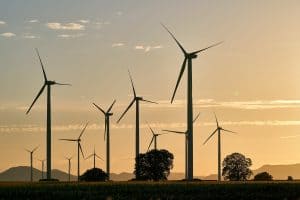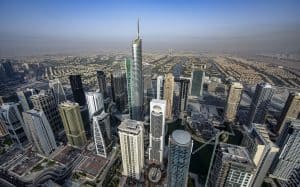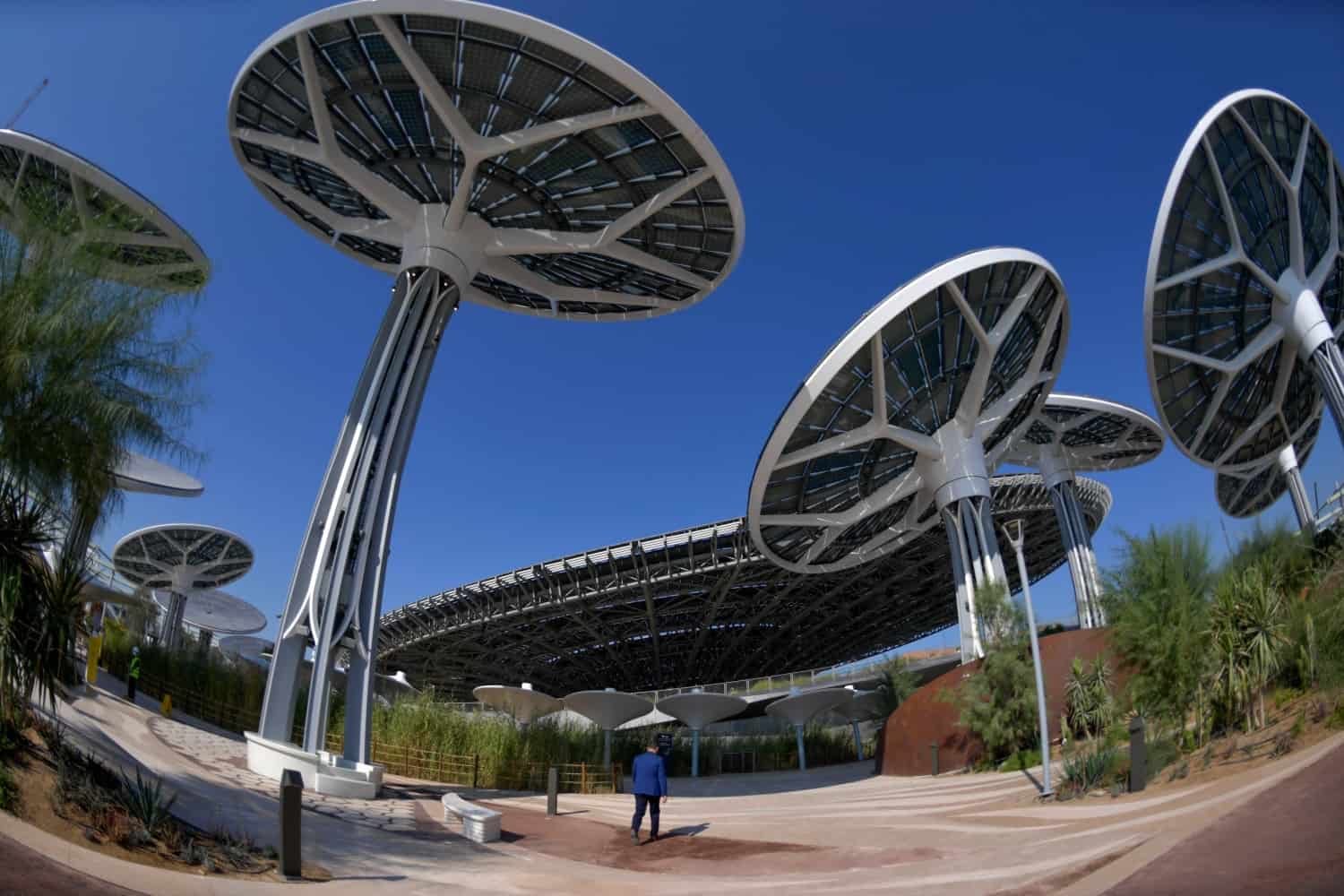The World Economic Forum (WEF) has said “decoupling” from fossil fuels is now more important than ever, especially when the Russia-Ukraine war is sending oil prices skyrocketing.
The forum, in a post titled “Wind and solar generated 10 percent of global electricity in 2021 – a world first,” cited figures from the Global Electricity Review 2022 to how the global progress on renewable sources of energy.
It said 50 countries have now crossed the 10 percent wind and solar landmark, with seven new countries added to the list in 2021.
The Gulf Cooperation Council members appear to be no exception.
Countries like the UAE, Saudi Arabia, and Oman appear on track to take giant strides in diversifying their portfolios when it comes to power generation.
Where GCC members and MENA stand
The aforementioned Global Electricity Review 2022, published by independent energy think-tank Ember, said “Europe leads the way with nine of the 10 top countries” when it comes to adopting renewable energy sources.

It, however, added: “The Middle East and Africa had the fewest countries reach a landmark 10th of wind and solar.”
It continued: “Saudi Arabia’s electricity is still less than 1 percent wind and solar, and the next two hosts of UN climate summits — Egypt and the UAE — have only 3 percent.”
Across the greater Middle East and North Africa region, Yemen, Jordan, Turkey, and Morocco have generated more than 10 percent of their power from solar and wind, according to the publication.
However, things appear poised to change very soon. Here’s a brief look at the projects — all either announced or completed this year — that may improve the region’s overall renewable outlook:
UAE government and private initiatives
The UAE has this year alone seen the announcement of several projects — both by the government and commercial firms — or their completion or expansion to increase its solar and wind footprint.
For example, Saeed Mohammed Al Tayer, MD & CEO of Dubai Electricity and Water Authority (DEWA), announced in mid-January that the production capacity of the first project of the fifth phase of the Mohammed bin Rashid Al Maktoum Solar Park had increased from 300 megawatts (MW) to 330MW.
Towards the end of the month, leading renewable energy company Masdar and Alpha Dhabi Holding subsidiary W Solar Investment, which is also a a development and investment company in the solar energy industry, formed a joint venture company (JVC) to develop clean energy projects in a range of geographies.
The new company, MW Energy Limited, would be expected to act as a development platform, focusing initially on a pre-identified pipeline of projects, while also exploring new opportunities under the guidance of both owners.
Then, in early March, Emirates Global Aluminium (EGA), Abu Dhabi National Energy Company PJSC (TAQA), and Dubai Holding and Emirates Water and Electricity Company (EWEC) announced an initiative to further develop the capacity of solar power generation in Abu Dhabi.
TAQA and Dubai Holding would go on to acquire EGA’s electricity generation assets in the UAE, holding a 50 percent share each.
The power generated from the assets would be supplied to the grid under a long-term power purchase agreement.

Meanwhile, the Dubai Multi Commodities Center (DMCC), which is also the Master Developer of the Jumeirah Lakes Towers (JLT) district in Dubai, announced in late March that it would install solar car shades across the majority of the district’s cluster car parking areas.
Once the 6.3MW project would be completed, it would make the district the home to one of the UAE’s largest district solar car shade installations, according to a report in the official Emirates News Agency.
Saudi ambitions
Saudi Arabia’s Minister of Energy, Prince Abdulaziz bin Salman bin Abdulaziz, said at an event in February this year that innovative technology would be essential in implementing the Green Saudi Initiative, which aspires to generate half of the domestic electricity need from renewable energy by 2030.
To that end, the country’s Ministry of Energy announced the next month that it had awarded contracts for the Ar Rass and Saad Solar renewable energy projects, which would together have a total capacity of 1,000 MW or 1GW.
Meanwhile, the National Agricultural Development Company (Nadec) had announced in mid-February itself that its solar energy project, located in the Haradh Industrial Park, had become commercially operational.
The solar photovoltaic (PV) park was developed by Nadec and French energy company Engie as part of a 25-year corporate power purchase agreement, the first of its kind in the country.
Across GCC, MENA, and the world
The UAE and Saudi Arabia have been active on the solar and wind front not just within their own borders but also across the region, and at times even beyond.
For example, a consortium led by Saudi Arabia-based ACWA Power inaugurated the 500MW Ibri 2 solar independent power project in Oman in partnership with the Oman Power and Water Procurement Company (OPWP) in late January.
Meanwhile, in early March, the Tunisian Government awarded UAE-based AMEA Power a Concession Agreement and a Power Purchase Agreement for a 100MW solar project in Kairouan, worth $100 million (AED368 million).
Challenges ahead
Harsh Vijay Singh, Project Lead at the WEF’s System Initiative on Shaping the Future of Energy, was quoted by the forum as saying: “Following Russia’s invasion of Ukraine, many countries have raised their renewable energy ambitions further.”
He added: “However, bottlenecks remain — mainly on the supply chain side, and on project implementation.”
Singh explained that delays in areas like the permitting of facilities and setting up electricity interconnections between countries would need to be addressed.
Progress on developing grids to support high levels of renewable energy has also been slow.
“Governments are beginning to look into this,” said Singh.








